 W
WAn art bike is any bicycle modified for creative purposes while still being ridable. It is a type of kinetic sculpture. The degree of artistic creativity and originality or new functionality of art bikes varies greatly, depending on the artist or designer's intentions.
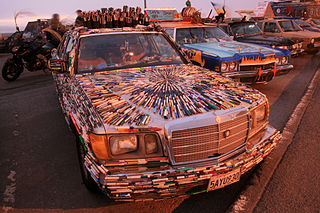 W
WAn art car is a vehicle that has had its appearance modified as an act of personal artistic expression. Art cars are often driven and owned by their creators, who are sometimes referred to as "Cartists".
 W
WThe Batmobile is the fictional car driven by the vigilante Batman. Housed in the Batcave, which it accesses through a hidden entrance, the Batmobile is both a heavily armored tactical assault vehicle and a personalized custom-built pursuit and capture vehicle that is used by Batman in his fight against crime. Using the latest civilian performance technology, coupled with prototype military-grade hardware—most of which was developed by Wayne Enterprises—Batman creates an imposing hybrid monster to prowl the streets of Gotham City.
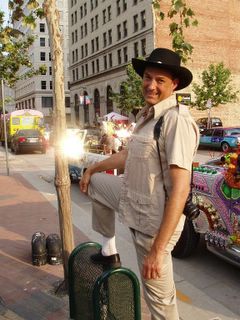 W
WHarrod Blank is an American documentary filmmaker and art car artist living at Berkeley in California. He is the son of Gail, a ceramic artist, and filmmaker Les Blank. His works include the 1992 film Wild Wheels, which documents the artcar phenomenon in America, and the 1998 follow-up Driving The Dream, which focuses on the artists behind the cars. His films have been shown on PBS, TBS, and in cities all over the USA. Harrod has created three art cars of his own: Oh My God!, Pico de Gallo and The Camera Van.
 W
WCustomised buses are buses that have been modified for decorative purposes. The customisation is unrelated to performing their job or work, usually as public transport buses. Customised buses are also sometimes not used for a job or work, and are decorated as personal projects for exhibition, although this is rare compared to other types of art vehicle such as cars, bikes and customised trucks.
 W
WDekotora or decotora , an abbreviation for "decoration truck", are extravagantly decorated trucks in Japan. Commonly displaying neon or ultraviolet lights, extravagant paints, and stainless or golden parts, dekotora may be created by workers out of their work trucks for fun, or they may be designed by hobbyists for special events. They are sometimes also referred to as art trucks (アートトラック), ātotorakku)).
 W
WThe Ectomobile is a fictional vehicle from the Ghostbusters franchise. It appears in the films Ghostbusters (1984), Ghostbusters II (1989), the remake Ghostbusters (2016), in the animated television series: The Real Ghostbusters, Slimer! and Extreme Ghostbusters, and in the video games Ghostbusters: The Video Game and Beeline's Ghostbusters and coming to the upcoming film Ghostbusters: Afterlife.
 W
WFurthur is a 1939 International Harvester school bus purchased by author Ken Kesey in 1964 to carry his "Merry Band of Pranksters" cross-country, filming their counterculture adventures as they went. Due to the chaos of the trip and editing difficulties, the footage of their journey was not released as a movie until the 2011 documentary film Magic Trip—although the bus featured prominently in Tom Wolfe's 1968 book The Electric Kool-Aid Acid Test.
 W
WGarden in Transit was a public art exhibit displayed on New York City taxicabs between September 2007 and December 2007. Adhesive, weatherproof paintings of flowers painted by children in schools and hospitals were applied to the exteriors of New York City taxicabs. The paintings were mostly made by New York City children, with some being made by children in New Jersey, Philadelphia, Atlanta, Cleveland, and Los Angeles. The project was organized by Ed and Bernie Massey.
 W
WThe Houston Art Car Parade is an annual event in Houston, Texas, featuring a display of all types of rolling art. The first and largest Art Car parade in the world, at any given parade spectators will see cars, bicycles, motorcycles, roller-skaters, and many other types of motorized and human-powered vehicles all decorated in various themes. There are also classic cars, lowriders, and various other highly modified roadworthy vehicles. The parade has been a Houston tradition since 1988, when 40 decorated vehicles were featured during the Houston International Festival. The first art car parade took place on May 14, 1986, when 11 vehicles participated in a parade down Montrose Boulevard within the Neartown area. In recent years, the parade has been held on Allen Parkway until the 2015 season prior to the re-routing of Allen Parkway where the westbound lanes have been converted into parking spaces; since 2016 the parade has been relocated to a section of Downtown Houston going up Smith Street with parade route going past Houston City Hall exiting westbound to Allen Parkway. The 2004 parade featured 250 entries observed by a live audience of over 100,000 people. There were over 260 entries in the 2006 parade. The 2007 parade featured 282 entries. On November 28, 2009, Houston had an illuminated art car parade, dubbed Glowarama. Dan Aykroyd served as the Grand Marshal for the 2010 parade. 2020 saw no parade as the COVID-19 pandemic was to blame; the 35th was deferred to 2021.
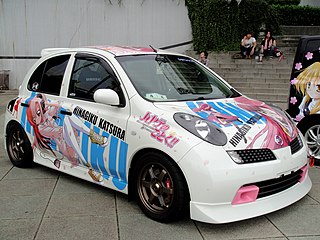 W
WIn Japan, an itasha is a car decorated with images of fictional characters from anime, manga, or video games. The decorations usually involve paint schemes and stickers. Automobiles are called itasha, while similar motorcycles and bicycles are called itansha (痛単車) and itachari (痛チャリ) respectively.
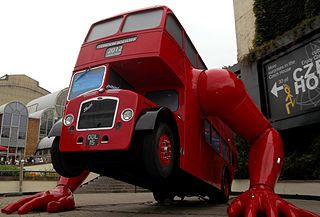 W
WLondon Booster is an art installation by Czech artist David Černý. It's a bus fitted with hydraulic arms, allowing it to do push ups, accompanied by audio-visual effects. It was created to celebrate the 2012 Summer Olympics and inspire the Czech Republic Olympic team. It was installed outside the Business Design Centre in Islington, which for the duration of the games was transformed into 'Czech House'.
 W
WA lowrider bicycle is a highly customized bicycle with styling inspired by lowrider cars. These bikes often feature a long, curved banana seat with a sissy bar and very tall upward-swept ape hanger handlebars. A lot of chrome, velvet, and overspoked wheels are common accessories to these custom bicycles.
 W
WNUTmobile is a series of automobiles shaped like a peanut owned by Kraft Heinz which are used to promote and advertise Planters products in the United States. The first version was created in 1935. Drivers of the NUTmobile are known as “Peanutters”. Nine "Peanutters" are selected to drive three Nutmobiles across the country in the given year. These brand representatives are typically recent college graduates with degrees in advertising, marketing, public relations, communications. The University of Illinois at Urbana-Champaign has a history of recruiting students with representatives in 2014-2015, 2016-2017, 2018–2019, and 2019-2020. During the year, "Peanutters" travel across the country giving out peanut samples, Mr. Peanut memorabilia, and other products from the Planters brand. The program is based in Madison, WI and "Peanutters" go through two weeks of 'Peanut Prep' where they learn about speaking on behalf of the Planters brand, Planters history, and learn to drive the vehicles. Mr. Peanut also accompanies the "Peanutters" and is present at each event they attend offering photos, autographs, and hugs to interested customers.
 W
WA tall bike is an unusually tall bicycle often constructed by hobbyists from spare parts. Typically, two conventional bicycle frames are connected, by welding, brazing, or other means, one atop the other. The drive train is reconfigured to connect to the upper set of pedals, and the controls are moved to the upper handlebar area.
 W
WThe trolleybuses of Roma Condesa are permanently parked trolleybuses in the Roma and Condesa neighborhoods of Mexico City that were used for art and other projects. Most were Japanese buses that were donated to Servicio de Transportes Eléctricos by the Kansai Electric Power Company in Japan in 1994, for possible operation, which never came to fruition, and in 2000 they were repurposed by Cuauhtémoc borough in a programme to create educational centers. However, the Trolebuses Educativos programme lasted only a few months. Some of the trolleybuses remained in use as simple reading rooms, but others sat abandoned until 2005, when the “Galería Trolebús” was begun to promote non-traditional art projects. The gallery ceased operations in 2009 due to financial problems, but the buses continued to be used for art projects until about 2014. Two other trolleybuses involved were not Japanese vehicles.
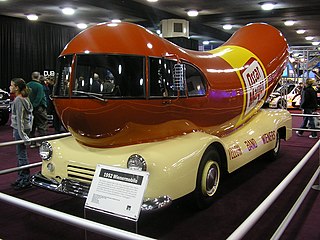 W
W"Wienermobile" is a fleet of motor vehicles shaped like a hot dog on a bun which are used to promote and advertise Oscar Mayer products in the United States.